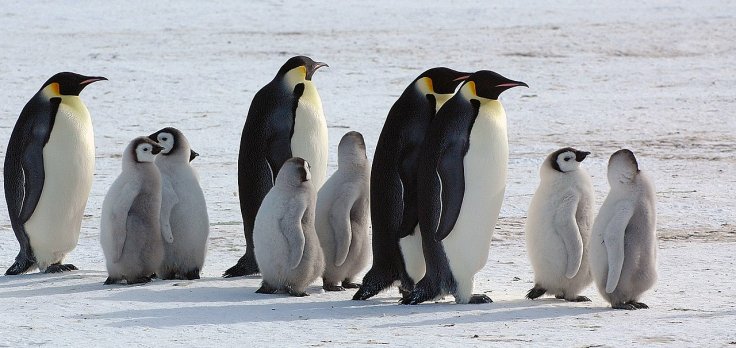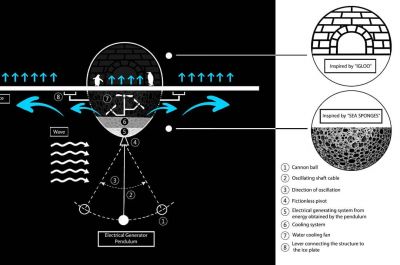The rising temperature of the planet and climate change have pushed many species to the brink of extinction. Emperor Penguins in Antarctica are also among them. With melting glaciers, increasing temperature and vanishing food sources, the birds face the threat of extinction in near future. However, an Iranian architect has conceptualized a habitat that could save them from extinction while also fighting climate change in the process.
While Penguins still have a stable population, melting ice seems to be the primary concern. As polar ice melts, it hampers their breeding, leading to a decrease in population. To fight both at the same time, the architect, named Sajjad Navidi, has come up with a unique solution called Penguin Protection System. The habitats are of an igloo shape with an underwater shell that can be used by penguins to search for food while it can also protect from melting polar ice.

He came up with the design for the 'Innovation for the Sea', a part of the biannual Architecture and Arts Competition, organized by Jacques Rougerie Foundation. Navidi's concept earned seventh place in the competition.
How Does It Work?
Navidi's concept design has two parts. The upper portion serves as an igloo where penguins can lay eggs and huddle together to stay warm. Navidi was inspired by penguins' thermoregulation behavior in a colony where a group of them huddle together to survive Antarctica's harsh winter conditions. The other problem it addresses is that penguins are in constant fear that the surface would melt, damaging the eggs. Navidi's design provides a safe place for penguins to hatch the eggs.

The lower portion of the structure mimics a sea sponge with an inverted igloo shape. It is aimed at protecting the melting ice. The inverted igloo is connected to an underwater swinging pendulum. As it is moved by the waves, it generates electricity to cool the area. Navidi believes that by cooling the water, it would stop melting polar ice that will also help save penguins, My Modern Met reported. While the design is still conceptual, it shows how science and art can come together to help fight climate change.
Will It Help?
Over the years, studies have shown that many species of penguins facing extinction threats due to overfishing and an increase in rainfall due to climate change. In Antarctica, the emperor penguin is expected to go extinct by the end of the century if climate change isn't addressed. According to scientists, if carbon emission continues at the current rate, 86 percent of the population will decrease by 2100 from where it will be difficult for them to bounce back.






"The current rate of warming in parts of the Antarctic is greater than anything in the recent glaciological record. Though emperor penguins have experienced periods of warming and cooling over their evolutionary history, the current rates of warming are unprecedented," Philip Trathan, British Antarctic Survey's head of conservation biology, said.
Currently, it is unknown if the emperor penguins will be able to adjust to the melting polar ice. As they are not agile species that can climb or migrate to other locations, their existence will be threatened. "For breeding, they depend upon sea ice, and in a warming world, there is a high probability that this will decrease. Without it, they will have little or no breeding habitat," Trathan said.
While Navidi's design does provide a solution, there are unknown variables. As the lower section of his design cools the temperature around the area, it will produce more ice. But too much ice could push the penguins away from open waters that would result in a loss of food source. The other potential problem is that human intervention can force their natural lifestyle to change. That could have unknown consequences.









